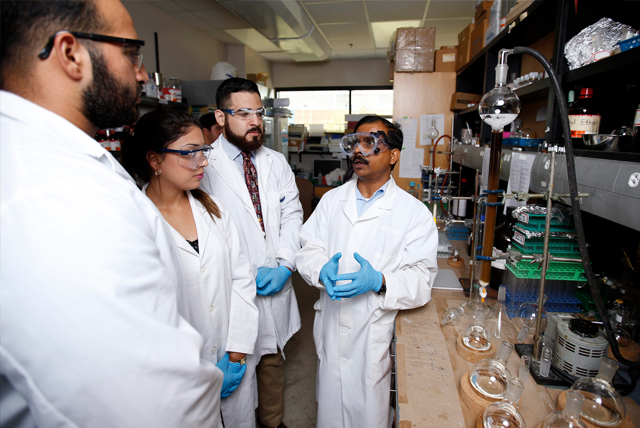Copper(II) and lead(II) adsorption onto zinc sulfide nanoparticles effects of light, pH, time, temperature, and interferences
Document Type
Article
Publication Date
8-2022
Abstract
A ZnS nano-sorbent to remove copper(II) and lead(II) ions from aqueous solutions was prepared via a hydrothermal reaction and characterized by X-ray diffraction. The zinc sulfide nanoparticle size was determined to be 7.0 ± 0.22 nm. The effects of pH, light conditions, time, capacity, and interferences on the zinc sulfide ability to remove copper(II) and lead(II) ions from aqueous solutions were investigated. pH studies showed that pH 5 was the optimal value for zinc sulfide binding both copper(II) and lead(II) ions. Under ambient light, the binding of both ions occurred within the first 5 min. Binding capacities ranged from 116.2 to 243.9 mg/g for copper(II), 39.1 to 147.1 mg/g for lead(II) ions, and 36.1–79.4 mg/g for lead(II) ions in the dark over temperature range from 4 to 45 °C. The thermodynamic parameters showed that the binding process for both copper(II) and lead(II) ions was either spontaneous or close to equilibrium. Light conditions were also investigated in the context of cation interference and showed that the presence of hard cations had no effect on the binding of lead(II) ions. On the other hand, the presence of hard cations showed small decrease in the binding of copper(II) ions.
Recommended Citation
Cantu, J. M., J. P. Valle, A. Puente, C. Valdes, K. Flores, Helia Magali Morales, E. Fletes, Mataz Alcoutlabi, Evangelia Kotsikorou, and J. G. Parsons. "Copper (II) and lead (II) adsorption onto zinc sulfide nanoparticles effects of light, pH, time, temperature, and interferences." International Journal of Environmental Science and Technology 19, no. 8 (2022): 6993-7008. https://doi.org/10.1007/s13762-021-03610-w
Publication Title
International Journal of Environmental Science and Technology
DOI
10.1007/s13762-021-03610-w



Comments
Reprints and permissions
https://rdcu.be/dwJcU